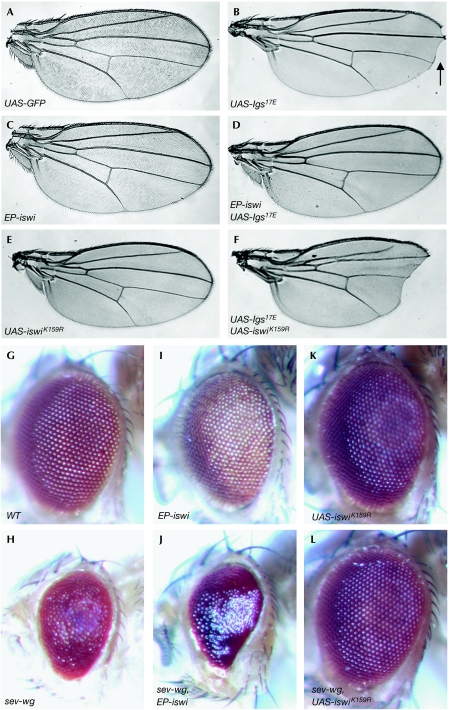Figure 1.
The activity of ISWI is crucial when Wingless signalling is compromised in the wing and eye of Drosophila. salE-Gal4 drove the expression of (A) UAS-GFP, (B) UAS-lgs17E, (C) EP-iswi, (D) UAS-lgs17E and EP-iswi, (E) UAS-iswiK159R, and (F) UAS-lgs17E and UAS-iswiK159R. The arrow in (B) indicates the notched-wing phenotype caused by Lgs17E. (G–L) The rough eye phenotype generated by sev-Wg was affected by ISWI activity. (G) GMR-Gal4/+, (H) GMR-Gal4/+; sev-wg/+, (I) GMR-Gal4/EP-iswi, (J) GMR-Gal4/EP-iswi; sev-wg/+, (K) GMR-Gal4/+; UAS-iswiK159R/+, and (L) GMR-Gal4/+; UAS-iswiK159R/sev-wg. It has been reported that universal or strong expression of ISWIK159R can affect cell viability (Deuring et al, 2000). However, on expressing ISWIK159R alone using salE-Gal4 or GMR-Gal4, we did not observe any wing or eye phenotypes (E,K). We believe that the lack of an obvious effect on viability is due to the moderate expression levels achieved with these drivers and possibly because of the timing of the expression. EP, enhancer P element; GFP, green fluorescent protein; ISWI, imitation switch; Lgs, legless; sev, sevenless; Wg, wingless; WT, wild type.

